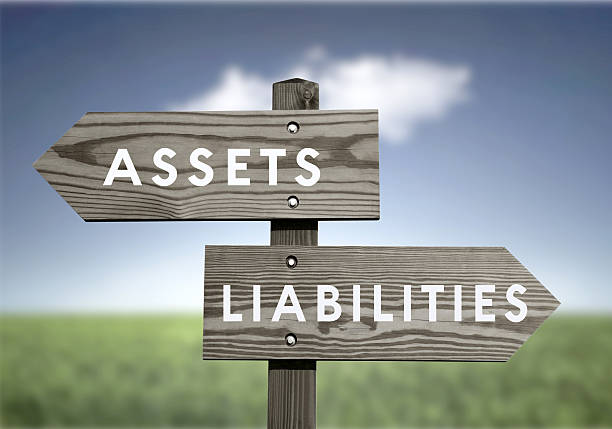
When it comes to financial freedom, everyone talks about having multiple income sources, saving more, investing smartly, or managing debt. And yes, all of that is important.
But if you ask me where to start your journey toward wealth, I’d recommend one simple thing — read Rich Dad Poor Dad by Robert Kiyosaki.
Why?
Because before you learn how to make or invest money, you must first understand one crucial concept: the difference between assets and liabilities.
What Are Assets and Liabilities?
Let’s begin with the textbook definition:
-
Asset: A resource owned or controlled by an entity that has monetary value and is expected to provide future economic benefits.
-
Liability: A present obligation arising from past events, which is expected to result in an outflow of resources (like money, goods, or services) in the future.
Sounds complex?
That’s because these definitions come from the accounting world — not from personal finance.
Robert Kiyosaki simplified it beautifully:
“An asset is something that puts money into your pocket.
A liability is something that takes money out of your pocket.”
This simple statement changes how we view money and wealth creation.
Why Understanding Assets and Liabilities Matters in Personal Finance
If you want to become financially independent, your ultimate goal should be to own more assets and reduce liabilities.
Here’s why:
-
Assets build wealth. They generate income or appreciate in value over time.
-
Liabilities drain wealth. They create expenses and take money away from you.
So, the equation is simple:
Assets – Liabilities = Net Worth
If your assets grow and your liabilities shrink, your net worth automatically increases.
Is Your Home an Asset or a Liability?
One of the most debated questions in personal finance is this:
“Is the house you live in an asset or a liability?”
Most people instantly say, “Of course it’s an asset!” After all, it’s a valuable property, right?
But let’s analyze it logically using two criteria that define a true asset:
-
It should appreciate in value over time.
-
It should generate cash flow (bring in money).
Now, let’s apply these to your primary home:
1. Does it appreciate in value?
Yes, real estate usually appreciates over time.
But here’s the catch — do you intend to sell your home when its value rises?
In 90% of cases, the answer is no. You live in it. So, the appreciation is only on paper — it doesn’t add money to your pocket unless you sell or rent it out.
2. Does it generate cash flow?
No. Your primary home doesn’t give you any income.
Instead, it takes money out of your pocket — property tax, maintenance, electricity bills, repairs, and more.
So, based on these two points, your primary home is not an asset — it’s actually a liability, because it involves continuous cash outflow.
Then What Kind of Property Is an Asset?
A property that you rent out is an asset.
Why? Because it generates cash flow every month and appreciates in value over time.
Let’s take an example:
Suppose you buy a second apartment worth ₹50 lakh and rent it out for ₹15,000 per month.
-
You earn ₹1,80,000 every year in rent.
-
Meanwhile, the property value increases by, say, 5% annually.
In this case, your property is putting money into your pocket and growing in value — a perfect example of a wealth-building asset.
The Two Golden Rules to Build Wealth
To achieve financial freedom, you must control both sides of the equation — assets and liabilities.
1. Build Assets
Invest in things that appreciate and generate income, such as:
-
Dividend-paying stocks or mutual funds
-
Rental real estate
-
A business that earns profit
-
Digital products or content that generate passive income
These assets work for you even when you’re not working.
2. Control Liabilities
Not all liabilities are bad, but uncontrolled liabilities can lead to a debt trap.
Examples of liabilities include:
-
Car loans
-
Credit card debt
-
Personal loans
-
Even your own home (if it doesn’t generate cash flow)
When liabilities grow faster than your income, you end up spending your future earnings today — which is the opposite of financial freedom.
Example: How Assets and Liabilities Impact Net Worth
Let’s consider two friends, Amit and Rahul.
-
Amit buys a luxury car worth ₹20 lakh on loan. EMI: ₹30,000 per month.
-
Rahul invests ₹20 lakh in a rental property earning ₹15,000 per month.
After 5 years:
-
Amit’s car depreciates and has no income value. Liability = high.
-
Rahul’s property value grows and gives steady rent. Asset = growing.
Rahul’s net worth increases, while Amit’s decreases — even though both started with the same ₹20 lakh!
That’s the power of understanding what adds money to your pocket versus what takes it away.
The Bottom Line
If you truly want to be wealthy, don’t just work for money — make your money work for you.
Start by building assets that grow and generate cash flow while reducing liabilities that drain your income.
Always remember the golden formula:
Assets – Liabilities = Net Worth
Focus on increasing the first and reducing the second, and financial freedom will naturally follow.
So, the next time you’re about to spend on something big, ask yourself:
👉 Will this put money into my pocket, or will it take money out?
Your answer will decide whether you’re moving closer to wealth — or further away from it.
FinsetWealth Insight:
Building wealth isn’t about how much you earn, it’s about how much you keep and grow. Start identifying your assets and liabilities today — because that’s the real foundation of financial freedom.



Leave a Reply